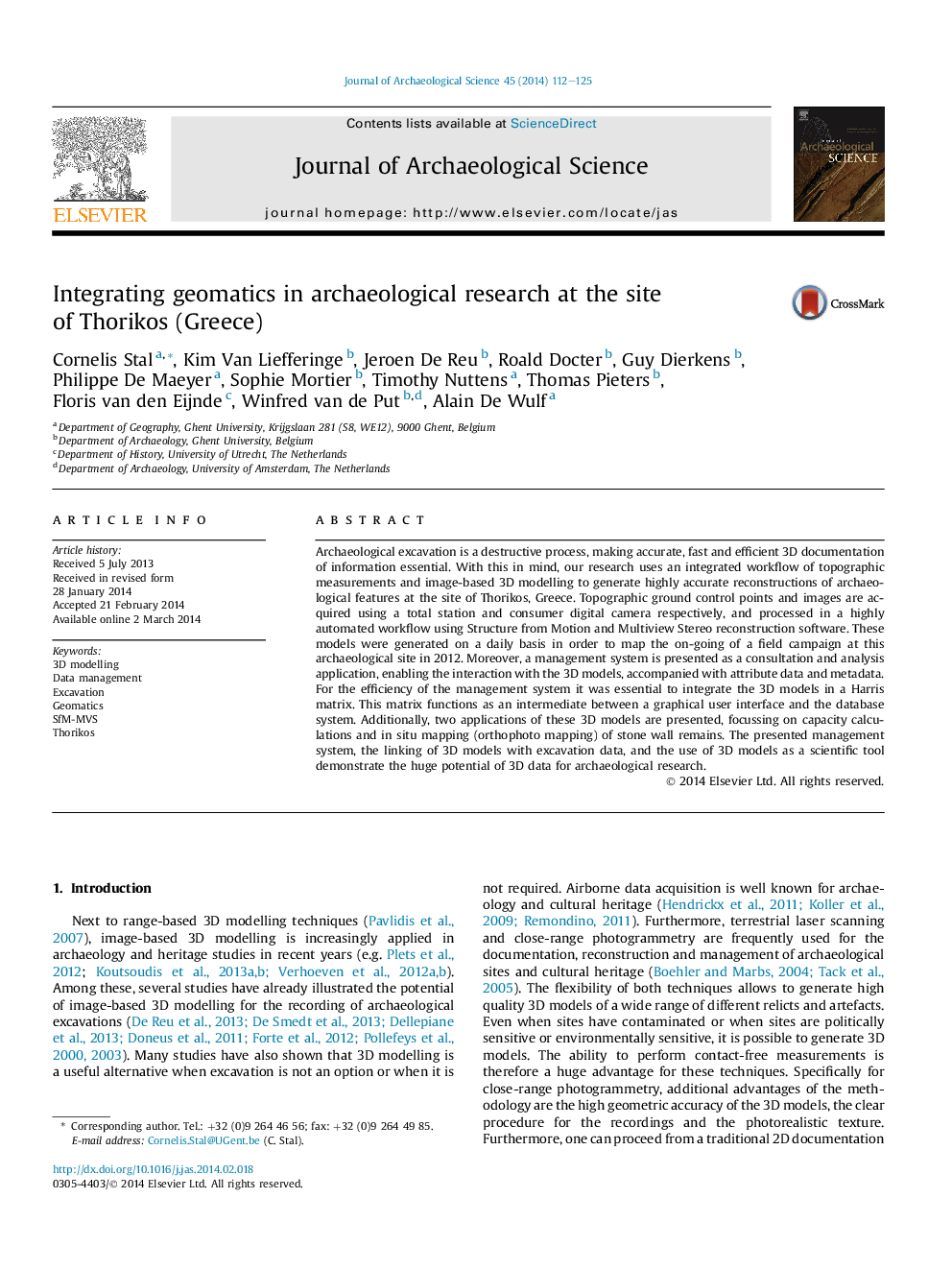| Article ID | Journal | Published Year | Pages | File Type |
|---|---|---|---|---|
| 7443420 | Journal of Archaeological Science | 2014 | 14 Pages |
Abstract
Archaeological excavation is a destructive process, making accurate, fast and efficient 3D documentation of information essential. With this in mind, our research uses an integrated workflow of topographic measurements and image-based 3D modelling to generate highly accurate reconstructions of archaeological features at the site of Thorikos, Greece. Topographic ground control points and images are acquired using a total station and consumer digital camera respectively, and processed in a highly automated workflow using Structure from Motion and Multiview Stereo reconstruction software. These models were generated on a daily basis in order to map the on-going of a field campaign at this archaeological site in 2012. Moreover, a management system is presented as a consultation and analysis application, enabling the interaction with the 3D models, accompanied with attribute data and metadata. For the efficiency of the management system it was essential to integrate the 3D models in a Harris matrix. This matrix functions as an intermediate between a graphical user interface and the database system. Additionally, two applications of these 3D models are presented, focussing on capacity calculations and in situ mapping (orthophoto mapping) of stone wall remains. The presented management system, the linking of 3D models with excavation data, and the use of 3D models as a scientific tool demonstrate the huge potential of 3D data for archaeological research.
Related Topics
Physical Sciences and Engineering
Materials Science
Materials Science (General)
Authors
Cornelis Stal, Kim Van Liefferinge, Jeroen De Reu, Roald Docter, Guy Dierkens, Philippe De Maeyer, Sophie Mortier, Timothy Nuttens, Thomas Pieters, Floris van den Eijnde, Winfred van de Put, Alain De Wulf,
